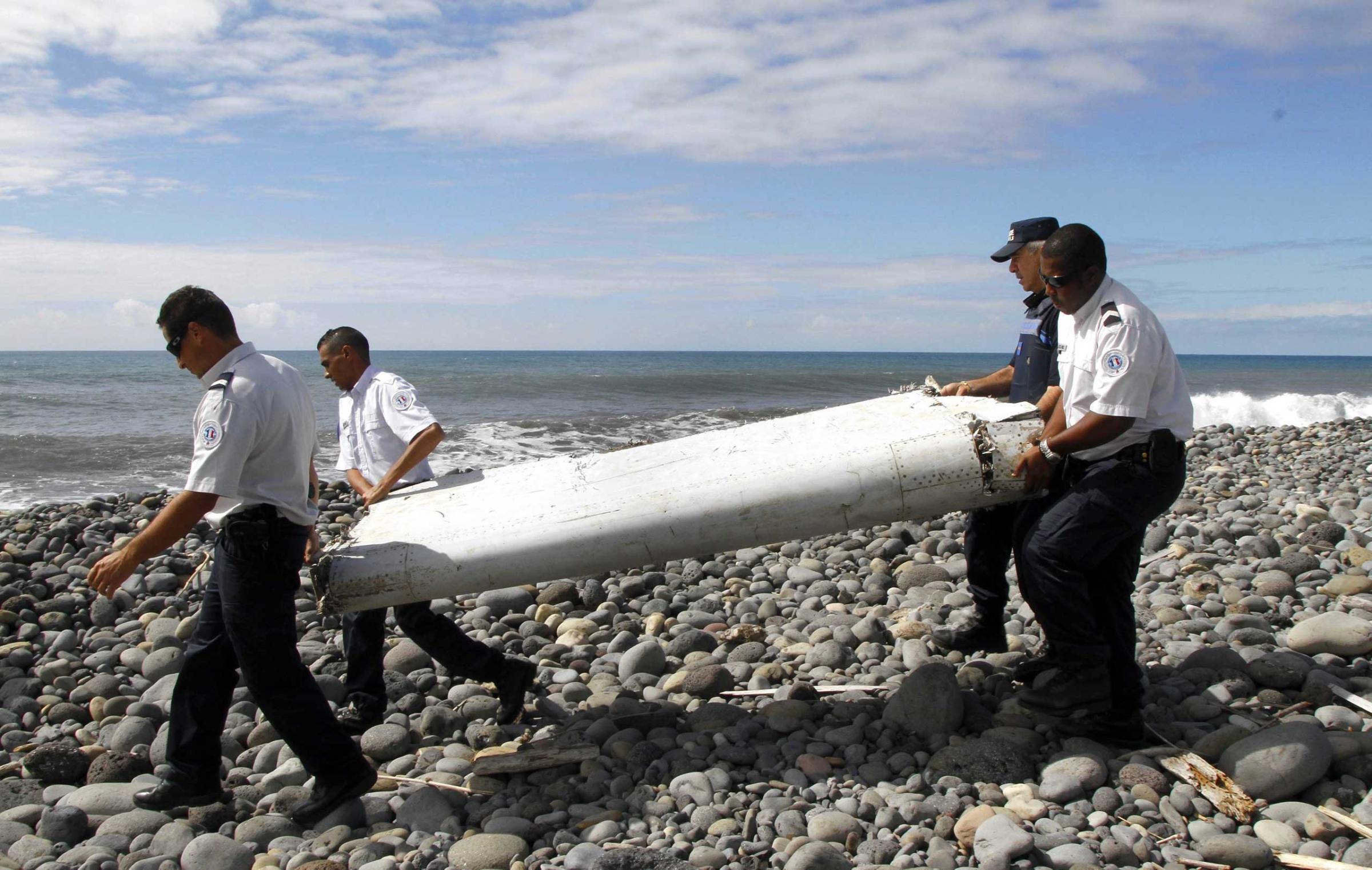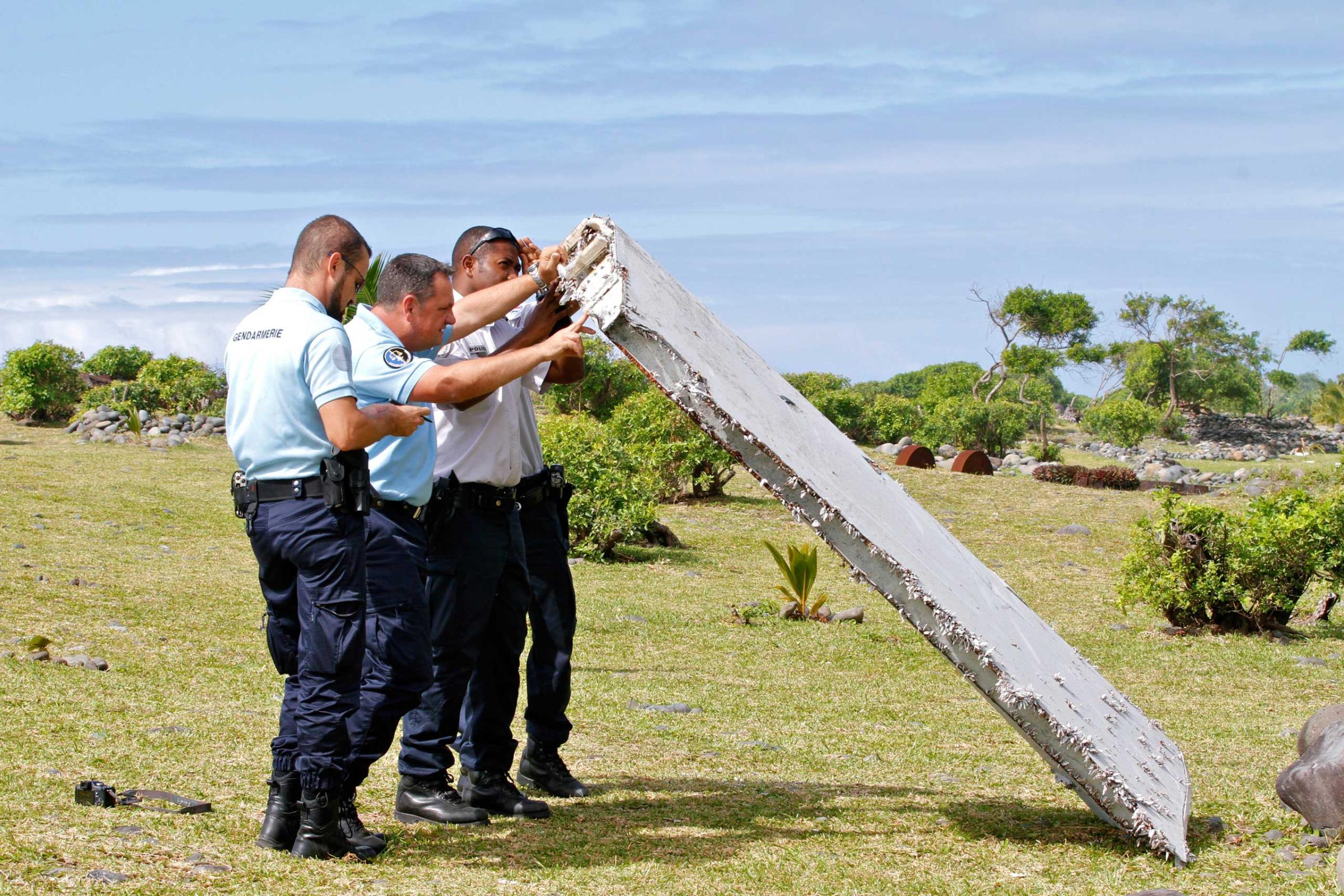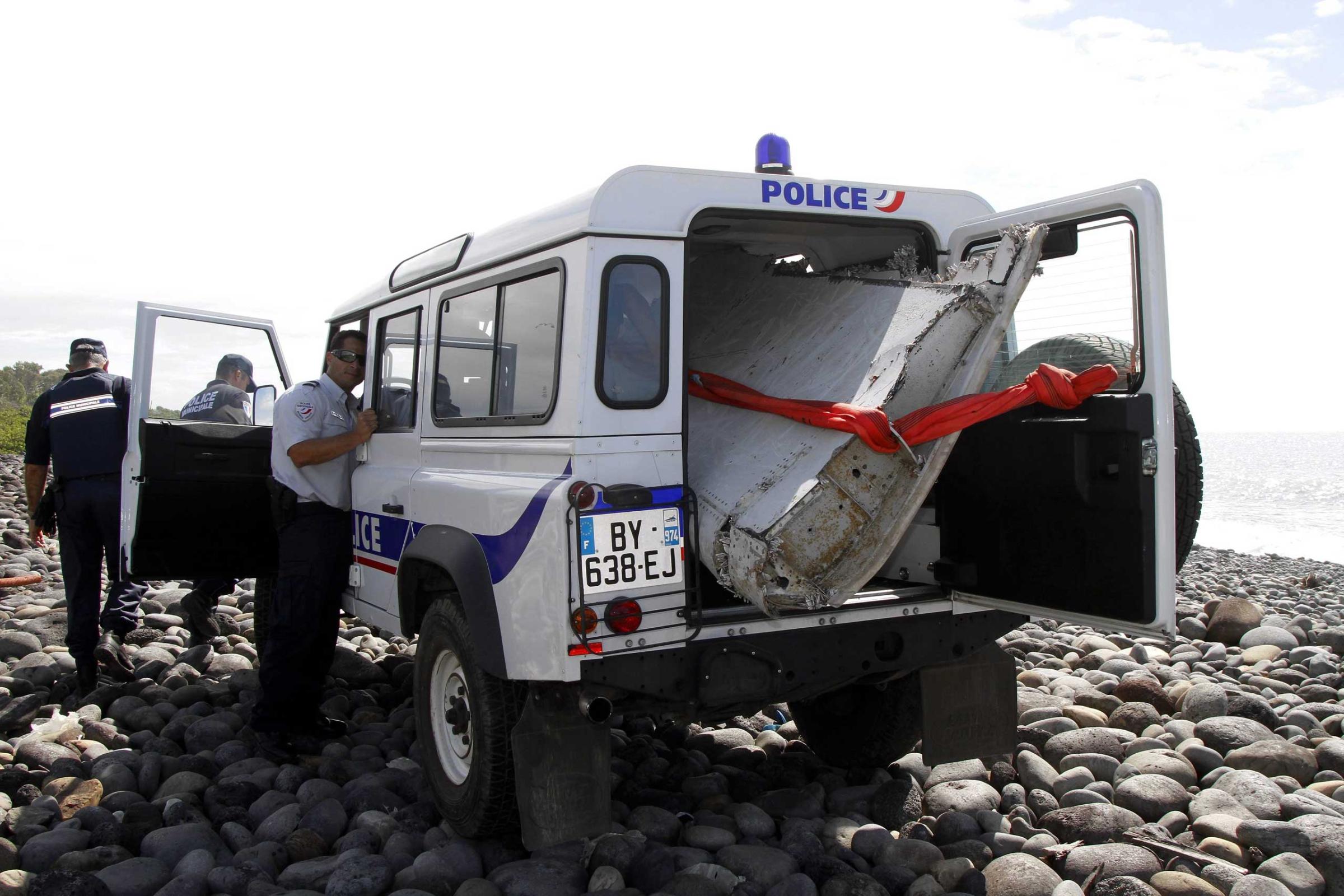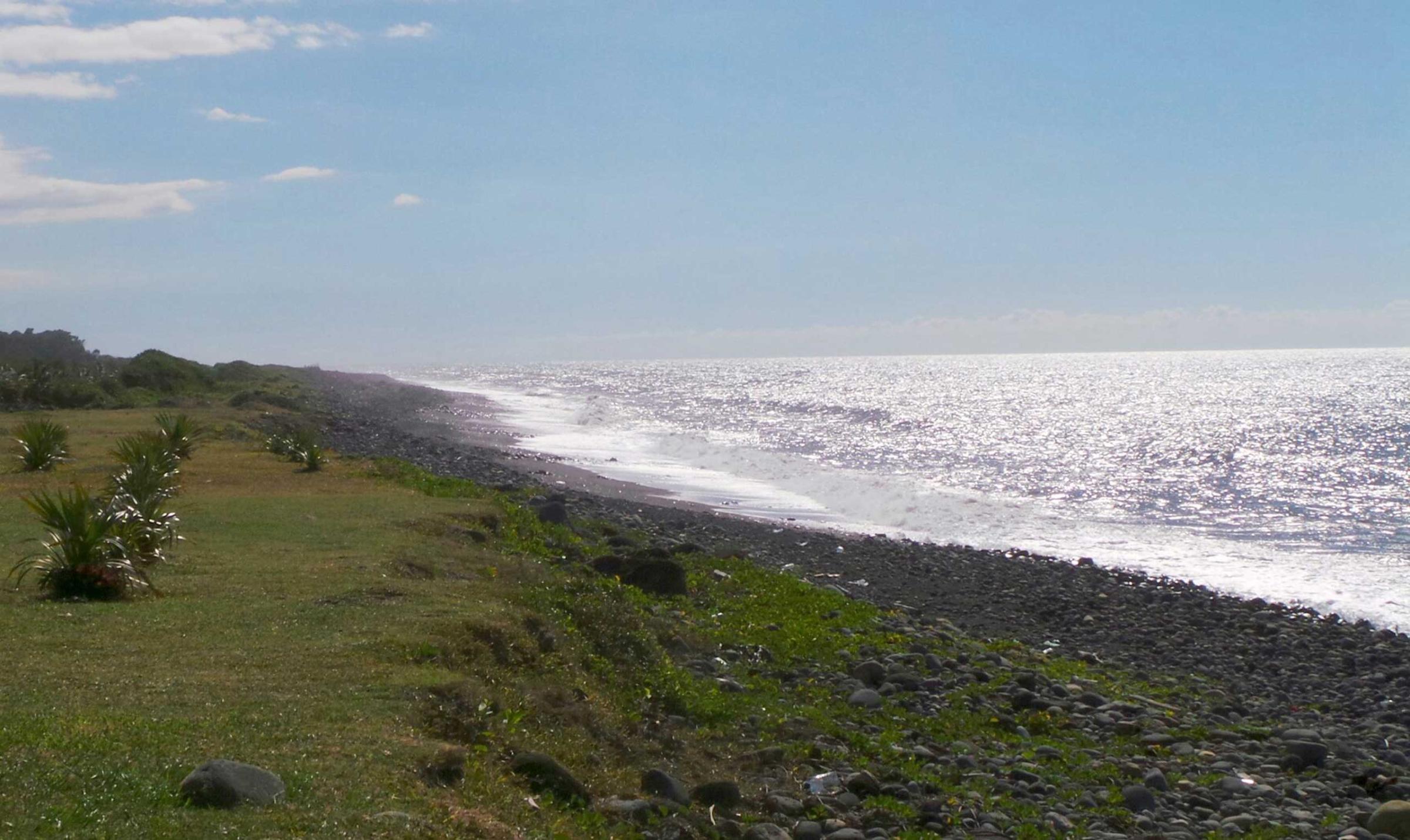An Australian official warned Thursday not to jump to conclusions about a barnacle-encrusted, 9-by-3-ft. piece of flotsam that washed up on the French island of Reunion — a discovery many are saying may be debris from the missing Malaysia Airlines Flight 370.
Australia’s deputy prime minister, Warren Truss, said it was premature to link the recovered chunk of metal with the jet that went missing 509 days ago. “It is too early to make that judgment,” Truss said at a news conference in Sydney. “But clearly we are treating this as a major lead and seeking to get assurance about what has been found and whether it is indeed linked to the disappearance of MH 370.”
Other officials have a “high degree of confidence” that the discovery is an aluminum-composite wing-flap from a Boeing 777, the same type of plane that vanished shortly after departing Kuala Lumpur for Beijing on March 8, 2014. The 227 passengers and 12 crew are all presumed dead.
Now engineers from Boeing are examining the debris to confirm that it is a flaperon from a 777, and even, if possible, from MH370 specifically. “We are treating this as a major lead and seeking to get assurance about what has been found and if it is indeed liked to the disappearance of MH370,” Australian Deputy Prime Minister Warren Truss said at a press conference Thursday.
Here’s what you need to know:
1. Where does the investigation stand?
Initial search efforts were concentrated along the flight’s charted route over the South China Sea, but then moved to the Strait of Malacca when Thai military radar indicated the aircraft doubled back across the Malay Peninsula (conventional tracking wasn’t possible as the plane’s secondary radar had been disabled inside the cockpit).
Then, after still no trace was found, pioneering data analysis by British satellite telecom firm Inmarsat indicated that MH370 had traveled south into the Indian Ocean, probably running out of fuel roughly 1,000 miles off the western Australia city of Perth.
A total of 55,000 sq km of seafloor has been scoured in this area, but the lack of any success prompted the search zone to be doubled to 120,000 sq km in May. In addition, thousands of reconnaissance flights were launched, with the combined operation costing more than $100 million — an unprecedented figure.
And so, if confirmed, Wednesday’s discovery of a supposed wing-flap — found 2,500 miles (or the equivalent of the width of the U.S.) from the search zone — would be the first definitive piece of proof that the plane had crashed.
“Malaysia Airlines is working with the relevant authorities to confirm the matter,” the carrier said in an emailed statement. “At the moment, it would be too premature for the airline to speculate the origin of the flaperon.”
2. What’s next?
Proving categorically that the recovered piece came from a Boeing 777. Investigators from the U.S. aviation giant, as well as representatives from Malaysia Airlines, are currently trying to make that call. But should verification prove tricky in tiny Reunion, they may transport the object to specialist labs in France for further examination. (France has jurisdiction to handle evidence found on its territory, though will work with Malaysia, which heads the overall investigation because it involves its flag carrier; Australia has also offered assistance.)
Ideally, they would find a serial number. If there’s a part number that starts with “113W,” then we know it comes from a 777. (A marking “PB670” was found on the object, revealed Truss, though the significance is so far unknown.)
If the part is confirmed as coming from a 777, experts say there will be little doubt it came from MH370. “Our goal, along with the entire global aviation industry, continues to be not only to find the airplane but also to determine what happened — and why,” said Boeing in a statement Wednesday.
This Is the Piece of Debris Suspected to Be Part of Missing Jet





3. So have we been searching in the wrong place all this time?
Not at all. In the almost 17 months since the plane vanished, debris could feasibly have drifted anywhere around the globe. Certainly, the buffeting South Atlantic Gyre could have swept a flaperon from Western Australia to Reunion.
“The information that we have is consistent with the search that’s being undertaken at the present time,” Truss told reporters. “It supports the satellite data and the identification of the area in the southern Indian Ocean as the likely place where the aircraft could have entered the water.
However, if confirmed, additional searches of islands near Reunion, and the coastlines of nearby Madagascar and East Africa, could also be initiated to try to find more debris.
4. What does it tell us?
If confirmed as a piece from MH370, the most telling initial detail is the size of the debris, which experts say makes a high-velocity nose-dive crash unlikely. Larger objects of this ilk are more common from slower impacts, such as a pilot deliberately plotting a gentle descent.
“It’s an indication that this broke off in some sort of a landing or a spiral down from altitude as the plane stalled and ran out of fuel,” Mary Schiavo, former inspector general of the U.S. Department of Transportation, told CNN.
But even the attached barnacles could tell an important story, given that there are over 1,000 different species throughout the oceans dependent on myriad environmental factors.
5. What’s the legal significance?
Very little. Under the Montreal Convention, litigation against an airline must take place within two years of a disaster. This is still the time frame that lawyers representing the victims’ families are working within. But Malaysia Airlines has already accepted responsibility and declared that the missing plane was “lost.”
Compensation has already been announced, although the amount could be challenged. However, as an airline has a “strict liability” to deliver passengers to a destination, the cause of the crash — pilot suicide, pilot error, hijacking, etc. — only has limited significance.
“The cause may not matter vis-à-vis the airline regarding what their duties and responsibilities are to pay compensation,” Brian Alexander, a lawyer specializing in aviation litigation for Kreindler & Kreindler LLP, which is representing 48 victims’ families, tells TIME. “And I don’t think this one finding would affect our decisionmaking regarding the timing of the filing.”
However, should more wreckage be found to indicate the disaster resulted from a mechanical fault that was not the airline’s fault, additional litigation could theoretically be brought against Boeing.
6. What about the families?
This is where the discovery could be hugely significant. Without debris, conspiracy theories have proliferated, with some suggesting an elaborate heist and that the airplane may have been stashed for reuse in a later terrorist attack, possibly in a disused Soviet-era military runway somewhere near the Caucuses. Many families have refused to give up hope until the plane has definitively been proved as crashed. That time, for better or worse, may soon be upon us.
More Must-Reads from TIME
- Cybersecurity Experts Are Sounding the Alarm on DOGE
- Meet the 2025 Women of the Year
- The Harsh Truth About Disability Inclusion
- Why Do More Young Adults Have Cancer?
- Colman Domingo Leads With Radical Love
- How to Get Better at Doing Things Alone
- Michelle Zauner Stares Down the Darkness
Write to Charlie Campbell at charlie.campbell@time.com